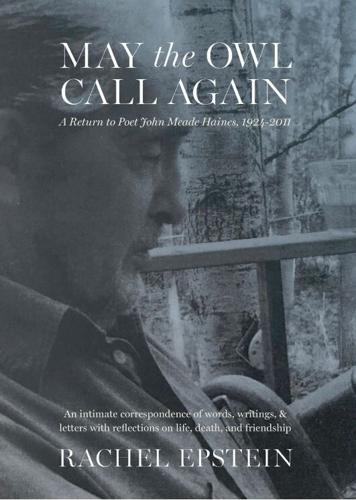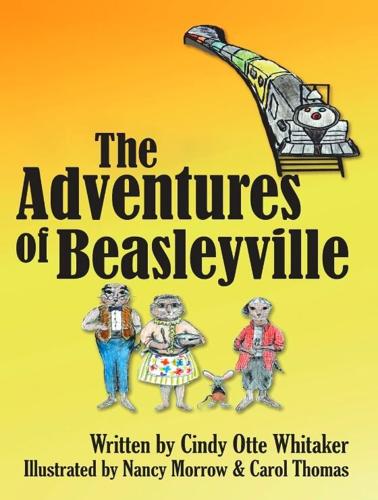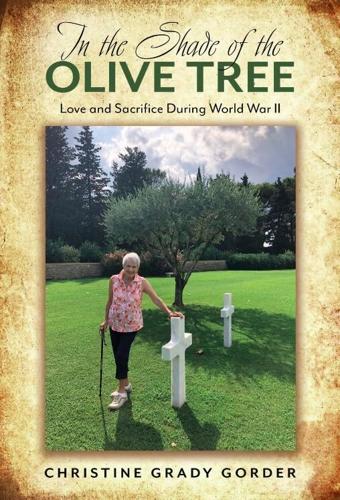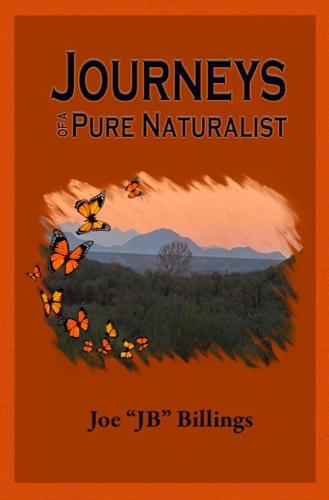“Do You Believe in Miracles?” by Angela Lopez and Eugene Sierras. Trafford Publishing. 101 pages. $26.99 paperback; $3.99 e-book.
As Angela Lopez relates it, in 1999, the year she was retiring from teaching school, she had a dream about God. White-bearded, kindly and old, He had an idea: Open a Catholic store — an outlet for religious items. “Show people beautiful rosaries, scapulars, and religious statues,” God told her. So she did. Across from Tucson’s Rincon Market.
This glossy yet modest volume is a collection of personal anecdotes and stories told to Lopez that attribute miracles in life to saints’ intercessions or prayer — the reappearance of long-lost possessions, inexplicable recovery from illness, the banishing of evil spirits, the shadowy apparition of the Virgin Mary. Many of these stories came from conversations in the small midtown shop — Casa de Inspiración — which she ran for 15 years with a colleague. The shop and this collection are clearly labors of love.
— Christine Wald-Hopkins
“May the Owl Call Again: A Return to Poet John Meade Haines, 1924 — 2011” by Rachel Epstein. Cirque Press. 230 pages. $40.

Rachel Epstein’s title to this tribute to former poet laureate of Alaska John Meade Haines is a fitting complement to Haines’s poem “If the Owl Calls Again.” “At dusk/” it begins, “from the island in the river,/ and it’s not too cold, // I’ll wait for the moon/ to rise,/and then take wing to glide/ to meet him.”
Epstein wants Haines to be remembered.
Epstein, then the special events coordinator at the University of Alaska Anchorage Campus Bookstore, met John Meade Haines in 2009. He, at 84, had come to Anchorage to participate in an Alaskan Writer Laureates panel. They began a friendship through letters that would last until his death two years later. Here she compiles his letters to her, a lecture, a representation of his visionary nature poems and essays, and her own reflections.
Haines was an unconventional poet: migrating from the East to homestead in wilderness Alaska, he built his own house and lived on the economic edge, trapping and selling furs — then living on grants and temporary artist residences — and writing poetry that reflects the beauty and ferocity of Alaskan life and nature. He was reported to be “cantankerous,” (note five failed marriages), but his correspondence with Epstein shows a becalmed spirit, a still-curious mind and an elder’s encouragement, but also the reality of his aging body. Epstein presents the book to “anyone willing to open their world to a kind wildness that comforts and confronts day-to-day existence.”
It worked for this reader.
— Christine Wald-Hopkins
“The Uniform” by Carl M. Sargent. Wheatmark. 288 pages. $15.95 paperback.

Your standard World War II war stories feature players from the world’s powers — French resisters, British spies, US GIs. You don’t usually get what this remarkable biographical novel offers: the tale of a soldier from a powerless nation.
In 1938, Reho Othmann was a 13-year-old schoolboy in rural Estonia, when fascist rumblings were beginning to be felt in Western Europe. Tiny Estonia, then newly independent from Russia, perches on the Baltic Sea, with Finland to the north; Sweden to its west; the USSR fully abutting its eastern back. Estonia and the Baltic nations to the south — Latvia, Lithuania and East Prussia — couldn’t be more vulnerable — and useful — to competing superpowers. One reason is its resources, including human capital.
Young Reho became one of those resources. We follow him from his life as a choirboy charmed by a girl on a train, to military life prematurely thrust on him by competing forces. At 15, with his country under Soviet occupation and annexation into the USSR, he spied on Soviet military movements and ran messages for an underground Estonian resistance group. At 16 he barely evaded conscription by the Soviets. When the Germans then drove the Russians out of Estonia, 17-year-old Reho decamped to Finland to join its fight against Russia. That lost, he returned to Estonia and was conscripted into the Waffen SS — with whom he fought until Germany was defeated and he was taken as a prisoner of war. He was 20 years old and still had imprisonment in his future.
This is a masterfully written work. Green Valley resident Carl M. Sargent knew Reho Othmann, who died in 2015, but had agreed that his story be told in novel form. Othmann’s recollections are richly detailed; the action is gripping throughout. From a historical perspective, readers like this one — unfamiliar with the history of the Baltic states — come away with an unexpectedly new perspective. And the forces buffeting one young man, about whom we come to care, become emblematic of those roiling one small country. It’s unforgettable.
— Christine Wald-Hopkins
“The Adventures of Beasleyville” by Cindy Otte Whitaker. Illustrations by Nancy Morrow and Carol Thomas. Authorhouse. 40 pages. $37.11 hardcover, $14.99 paperback, $3.99 Kindle

Beasleyville is a thriving city with well-tended homes, gardens, sidewalks and even a train. It’s also subterranean, the work of clever gophers who scavenge above-ground back yards for bits of equipment to keep it running smoothly. For Buddy, a young mouse, it’s a life-saving haven he blundered into while on the run from a cat.
The gophers invite him to stay while he searches for his long-lost family. How to repay this kindness? Given the proclivity of “Topsiders” for setting snares to thwart four-footed intruders, Buddy believes he can be helpful. He does, after all, know a thing or two about mouse traps, and he proves it.
This is a charming book, perfect for a read-aloud. Young readers will enjoy author Cindy Otte Whitaker’s colorful, compassionate and resourceful characters — named for people and pets in her life — and her imaginative setting. Whitaker, who lives in Tucson and has a degree in criminal justice, hints that more Beasleyville adventures are planned.
— Helene Woodhams
“How to Win the Nobel Peace Prize” by Jeff Hartman. Independently published. 175 pages. $11.95; $4.99 Kindle

Collaborating on a book about world peace might not be everyone’s favorite way to spend summer vacation, but in this warm-hearted novel it’s a big idea that Joe Antonelli and his granddaughter, Amelia, can bond over.
Recently retired and somewhat at loose ends, Joe is looking forward to Amelia’s lengthy visit while her parents are away on business. But others in his family have misgivings: Amelia is on the autism spectrum and the two may not be a good fit.
They needn’t have worried. Joe is in tune with Amelia’s need for space and for honesty, and he marvels at the exceptional, thought-provoking person she is. Her autism, he realizes, is a super power. Thus armed, he inspires her best, and she returns the favor by reminding him of his youthful idealism. They connect, share and brainstorm together and their ideas about building a more perfect world explode like fireworks. Maybe winning a Nobel Prize isn’t such a crazy idea after all.
Author Jeff Hartman, a retired educator, clearly knows something about relationship building: this is a lovely story filled with tenderness and truth. Hartman has published three novels and an educational book for children on Columbia University’s Biosphere 2 Center. He lives in Tucson.
— Helene Woodhams
“In the Shade of the Olive Tree: Love and Sacrifice During World War II” by Christine Grady Gorder. Wheatmark. 269 pages. $16.95, $9.99 Kindle

They say you never forget your first love. This is certainly true for Christine Grady Gorder, whose story of devotion to an old flame has its roots in WWII-era Tucson.
In 1943, Gorder was a coed at the University of Arizona. With the proximity of Davis-Monthan there was no shortage of young airmen in town, and Gorder attended mixers at Bear Down Gym and USO dances at the Pioneer Hotel. One night she found herself falling in love to the strains of Glen Miller with Ward Sackal, a particularly handsome young flyer. But sweet romances are often a casualty of wartime — he shipped out a few months later, and died in combat.
In subsequent decades Gorder raised a family and had a successful career, but Ward Sackal stayed in her thoughts. With the help of diary entries and her own vivid recollections Gorder recounts, in this evocative and deeply satisfying memoir, the pilgrimage to find her lost airman that brought her to France and his final resting place. It’s a location to which she returns frequently to rendezvous with her never-forgotten, first love and, she notes, her passport is valid until she reaches age 100. Gorder is retired from careers at the CIA and as an ESL instructor at the UA, and lives in Tucson.
— Helene Woodhams
“Journeys of a Pure Naturalist (The Pure Naturalist Book 1)” by Joe “JB” Billings. MonarchQuestAZ. 266 pages. $33.17; $9.99 Kindle

Naturalist and self-proclaimed 21st-century caveman Joe “JB” Billings is the guy you want along when bushwhacking through wild country or paddling out to sea in a watercraft made of reeds. You might especially welcome him to join you around the campfire to swap stories: he’s got some great ones, as his new memoir cum adventure journal makes abundantly clear.
“Journeys” begins with the author’s youth in the shadow of the Santa Catalina Mountains, already attuned to the siren song of the outdoors. He describes many fine adventures in some hair-raising locales in the mountains and deserts of Southern Arizona and the Sea of Cortez, beguiling us with discoveries from mastodon molars to water scavenger beetles.
As the title indicates, Billings strives to be a “pure” naturalist, eschewing such modern conveniences as compasses and flashlights to live and learn like the Indigenous people. Among his many accomplishments is flintknapping, fashioning primitive weapons from stone.
There’s a lot to take in here — Billings has many passions he’s eager to share. Readers with an interest in the natural world will be enthralled by his work at MonarchQuestAZ — he’s tagged thousands of monarch butterflies to study their migration patterns and provides a thorough survey of native pollinator plants in the southwest desert.
Prior to MonarchQuestAZ, Billings was an award-winning landscape designer; he lives in Vail.
— Helene Woodhams
A unique book club at one of the nation's largest jails brings together college students and inmates. Their recent meeting at Cook County Jail was to discuss “Dead Man Walking,” a book writing by anti-death penalty activist Sister Helen Prejean. #bookclub
Subscribe: http://smarturl.it/AssociatedPress
Read more: https://apnews.com
This video may be available for archive licensing via https://newsroom.ap.org/home











